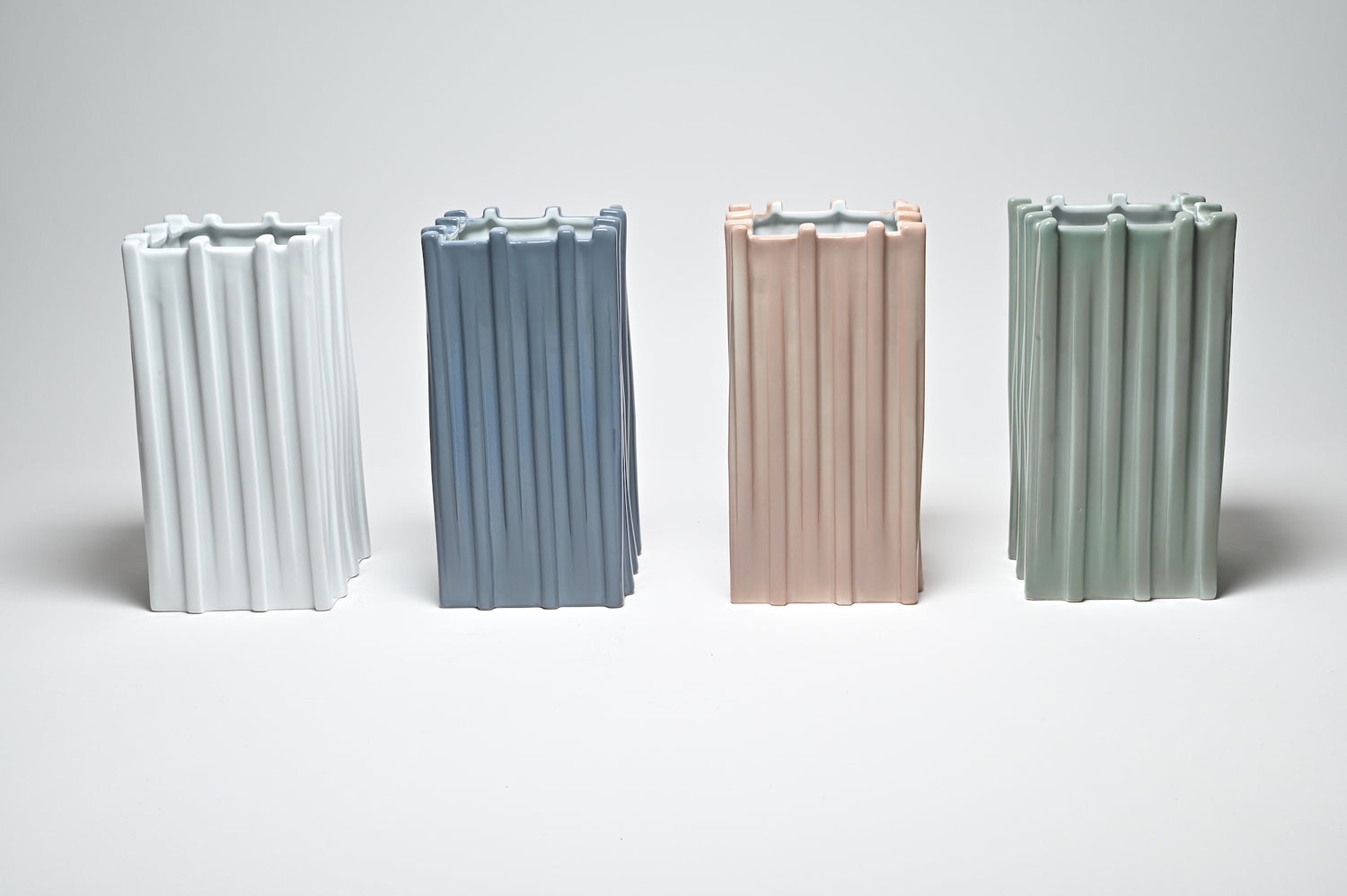The production of porcelain is a complex process that involves various steps to create a high-quality and aesthetically pleasing end product from raw materials. Here are the basic steps of making porcelain:
- The first step is to prepare the raw materials for porcelain production. These materials include kaolin (a special type of clay), feldspar and quartz. They are cleaned, crushed and mixed to obtain a homogeneous mass.
- There are various techniques for shaping porcelain, including casting, turning and wheel shaping. When manufacturing our products, the porcelain is cast.
- The shaped pieces are dried in the air or in special drying rooms. This is an important step in removing moisture and preparing the pieces for firing.
- The dried pieces of porcelain are fired at low temperatures to stabilize them and burn off the organic materials in the clay. This step is called biscuit firing.
- After the biscuit firing, the porcelain pieces are covered with glaze. The glaze is a mixture of mineral components that, when fired at high temperatures, fuse to form a glossy, glass-like surface. The glaze not only gives the porcelain its characteristic shine, but also protects it from moisture.
- The glazed porcelain pieces are fired at very high temperatures, usually in special kilns or kilns. This high temperature firing process allows the glaze to melt and fuse with the clay, creating a durable and attractive finish.
- After glaze firing, the finished pieces of porcelain are checked for quality. Aspects such as cracks, color consistency and pattern integrity are assessed to ensure they meet standards.
- Some porcelain pieces can be finished after firing, e.g. B. by adding hand-painted patterns, gold or platinum embellishments or other decorative elements.



Leave a comment
This site is protected by hCaptcha and the hCaptcha Privacy Policy and Terms of Service apply.